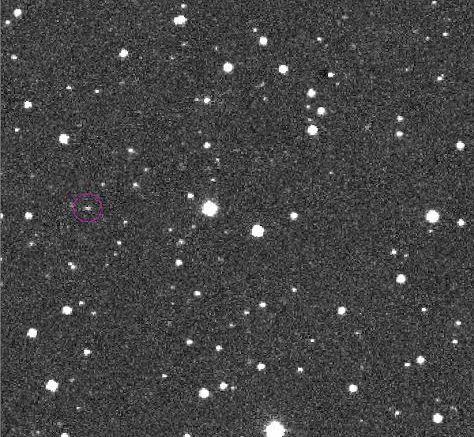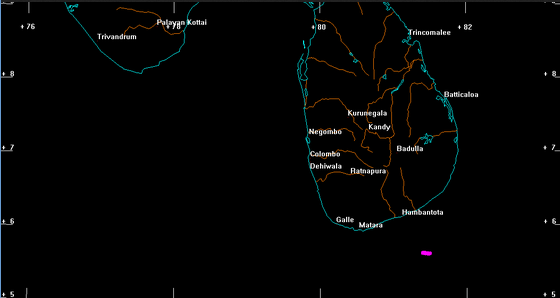How Worried Should We Be About Space Junk Crashing to Earth?

Space debris seen from outside geosynchronous Earth orbit (GEO). The two main debris fields are the ring of objects in GEO and the cloud of objects in low Earth orbit (LEO). (Photo: NASA/Public Domain/WikiCommons)
What the F is WT1190F? We know it was a mysterious piece of man-made “space junk” that lit up the sky for just a few seconds this morning before crashing into the Indian Ocean. But even as the ripples of its impact dissipate, scientists are still trying to figure out exactly what it was.
WT1190F was identified weeks ago by the Catalina Sky Survey (CSS), and it’s been carefully tracked by NASA, European Space Agency, U.S. Strategic Command’s JFCC Space, astronomers, and amateur observers alike across the globe. Scientists were able to accurately predict where and when the space debris would fall, allowing for a rare opportunity to observe an object acting in the same fashion as an asteroid–minus the catastrophic damage.
 ISS extravehicular activity. Most space debris is rocket stages, old satellites and fragments from disintegration, erosion and collisions. (Photo: Public Domain/WikiCommons)
ISS extravehicular activity. Most space debris is rocket stages, old satellites and fragments from disintegration, erosion and collisions. (Photo: Public Domain/WikiCommons)
WT1190F (the name is based on when and where it was most recently seen) was actually first spotted back in 2009 and seen again twice in 2013. At that time, it was quickly determined to be a man-made object and, therefore, largely ignored by Catalina Sky Survey (CSS) due to its primary mission of tracking natural Low-Earth Objects in orbit, like asteroids and comets. The distinction between those few times and its identification last month is that astronomers realized its destination.
“The difference this time was that the orbit was calculated and propagated into the near future and it was determined to be on an impacting trajectory (with Earth),” explains principal investigator Eric Christensen.
The location of the space debris is also what gave observing astronomers pause. NASA says there are over a half million pieces of “space junk” orbiting Earth (including Scottish bagpipes). Most of that is in low orbit, defined as below 2,000 kilometers from Earth’s surface. WT1190F was in high Earth orbit (about 36,000 kilometers above the Earth) meaning its original mission was a bit more lofty.
“The fact that it is in such a high orbit makes it interesting because it probably means it is associated with some kind lunar or planetary mission… and those are few and far between,” says Christensen.

WT1190F first spotted back in 2009. It was seen again twice in 2013. (Photo courtesy Catalina Sky Survey)
Upon determining that WT1190F was a high-orbiting, man-made object headed for planet Earth, Catalina Sky Survey turned to independent astronomy software developer Bill Gray to help figure out the when, where, and what. Gray and CSS are long time partners, working together informally for about 10 years to determine near-asteroid trajectories–including recently for NASA’s Near Earth Object Program.
Using his software and other observations coming in from around the world, Gray says he was able to determine a “fairly precise” longitude and latitude and time (to the second) of impact. For WT1190F, Gray estimated that it was going to hit about 100 kilometers off the southern coast of Sri Lanka into the Indian Ocean at 6:19 Universal Time (1:19 AM EST). He was right –within a few tenths of a second and a hundred meters.

Bill Gray’s prediction of the impact site for WT1190F. (Photo courtesy Bill Gray)
Between CSS observations, archival research, and Gray’s software, we can answer a few questions about exactly what WT1190F was. “We do know it’s in the very rough ballpark of one to six feet long,” Gray told Atlas Obscura on Monday. “We know how bright it is, but we don’t know if it is a small, shiny object or a larger, not so shiny object.” He also explains that it was so lightweight it was being pushed around by sunlight, making it pretty clear that the object is man-made. “There is nothing natural up there that is that white and fluffy,” jokes Gray. In addition, when it came falling out of the sky on Friday morning, it was tumbling. As Gray explains in Friday’s follow-up conversation, “It looked as if it was rotating about every second and half. You could see a bright flash and, in between, a faint flash. It probably was spinning fairly quickly as it came in.” This lends credence to the theory that it could be a rocket engine, which is currently being researched by Dr. Jonathan McDowell, an astronomer at the Harvard-Smithsonian Center for Astrophysics.
Though early reports suggested that WT1190F might date back to the Apollo-era (1960s and early 1970s), Gray is skeptical. He and CSS have both been going through historical records of space junk, trying to link the debris to previous sightings. They were able to date it to September 2009, but that’s as far back as they could be sure.
Based on the fact that WT1190F is still orbiting near Earth and hasn’t been knocked out of the Earth-Moon system, Gray theorizes that it probably dates back to a mission that took place between the late 1990s and the late 2000s. “It might have crossed a busy street a dozen times without getting hit. That could have happened, in which case it could be from Apollo. But it doesn’t seem too likely,” he says.

A PAM-D module that crashed in the Saudi Arabian desert in 2001, from a GPS satellite that had launched in 1993. (Photo: Public Domain/NASA)
Much of WT1190F burned up upon reentry and what didn’t–“a few nuts and bolts”–is probably lost forever in the depths of the Indian Ocean. As both Gray and Christensen both pointed out in separate conversations, it is unlikely we will ever know exactly what WT1190F was, though, after Friday’s observation, Gray is somewhat optimistic about Dr. McDowell’s rocket engine theory.
Says Christensen, “The fact that we as a species put something out there and then we lost track of it and now it is coming back to haunt or hit us… I understand the desire to identify exactly what it is–unfortunately, we may never know in this case.”









Follow us on Twitter to get the latest on the world's hidden wonders.
Like us on Facebook to get the latest on the world's hidden wonders.
Follow us on Twitter Like us on Facebook